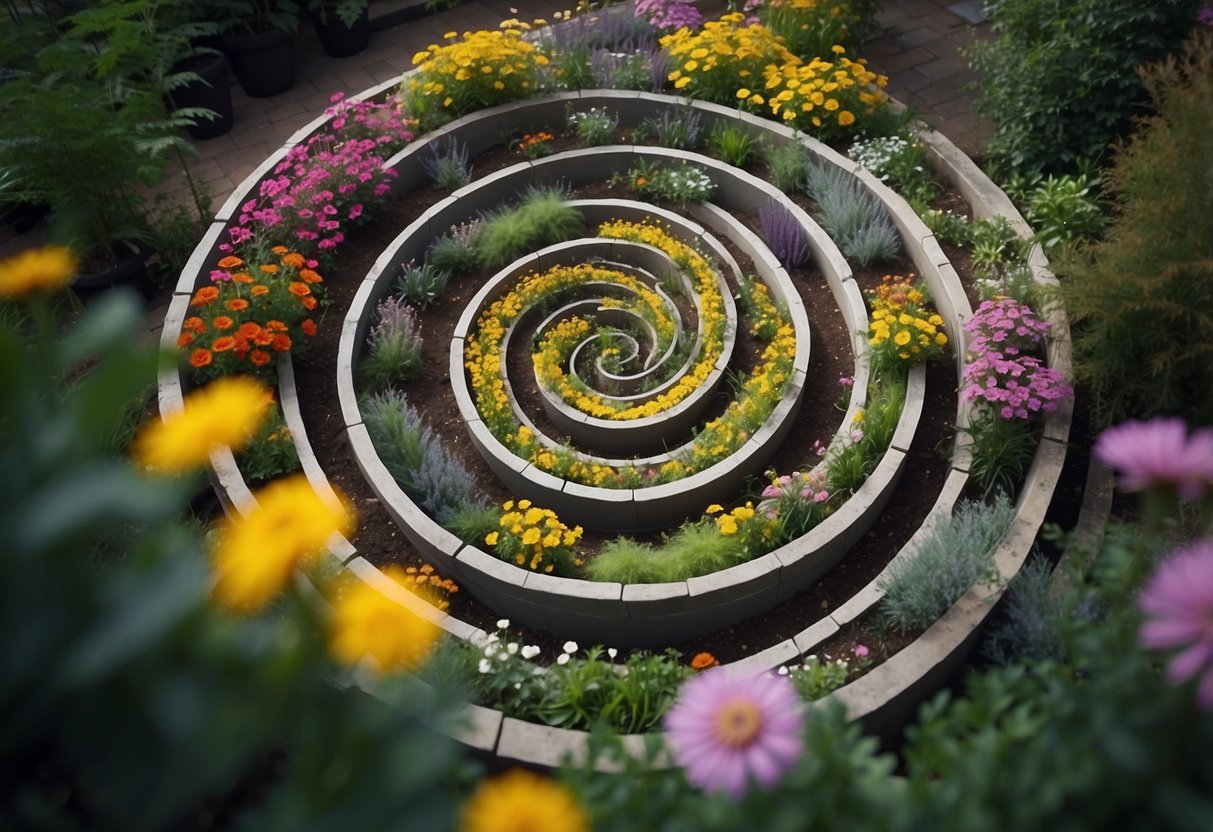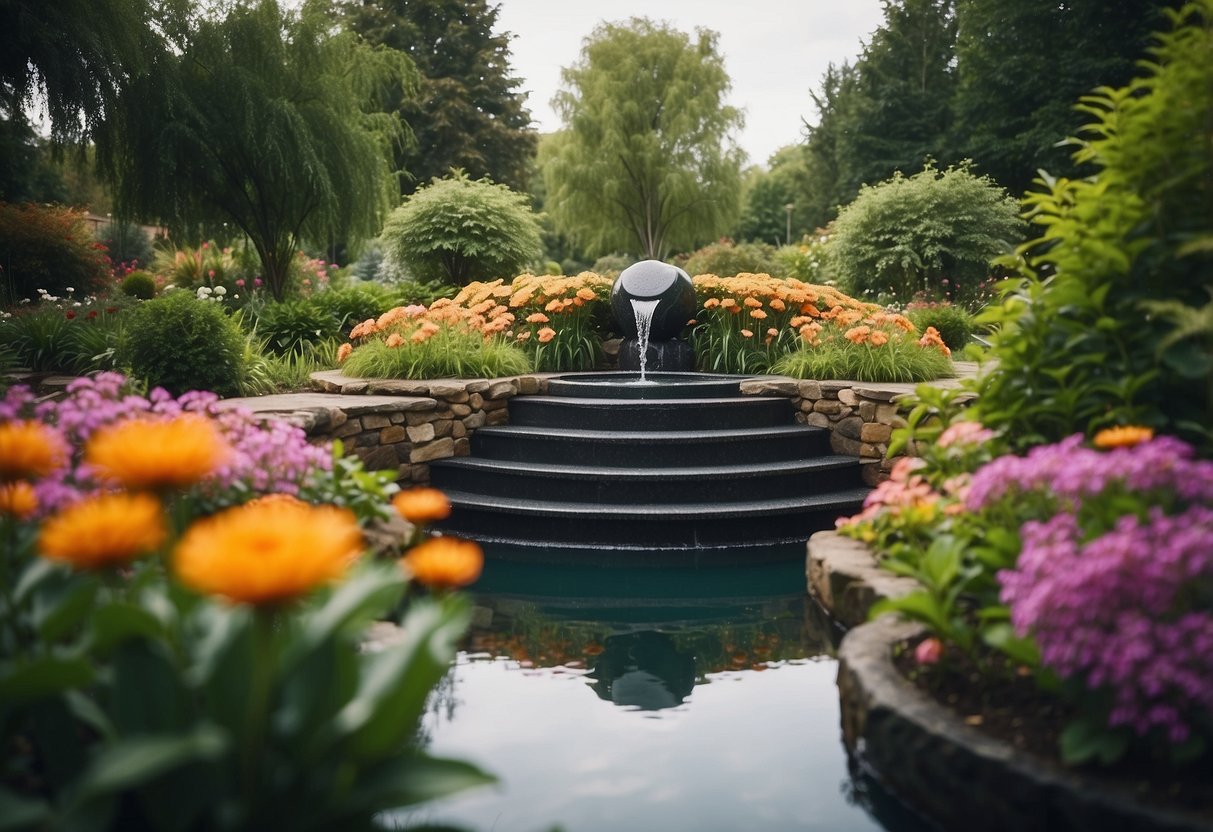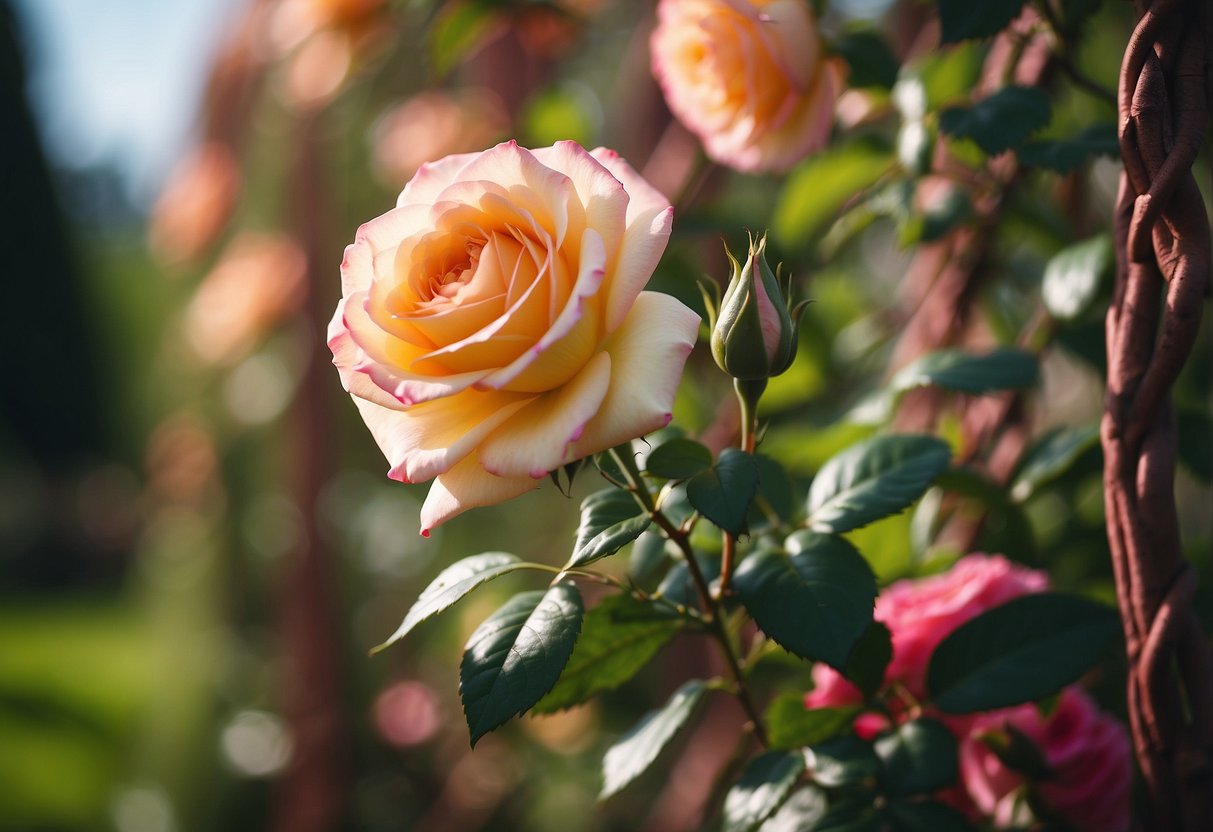Spiral Garden Ideas: Creative and Fun Designs for Your Yard
Spiral gardens are an exciting and creative way to make the most of your gardening space. These unique structures provide different growing conditions, making them ideal for a variety of plants. Whether you’re working with herbs or flowers, a spiral garden can add a touch of beauty and efficiency to your yard.

Wondering how to get started with your very own spiral garden? From choosing the right materials to arranging the perfect plants, there are many fun and simple ways to create a space that thrives. Spiral gardens not only look great but also offer practical benefits by optimizing water use and sunlight exposure.
1) Herb Spiral

A herb spiral is a unique and handy way to grow herbs in a small area. The spiral shape increases the growing space, letting you plant different herbs close together.
Because the spiral’s top gets the most sunlight, plant herbs that need more sun there. Use materials like stone or wood to build your spiral garden. You’ll love how it looks and how it helps your herbs thrive.
2) Succulent Spiral

A succulent spiral is a charming and low-maintenance option for your garden.
Succulents thrive in this design because they love well-drained soil and sunny spots.
You can use rocks or bricks to build the spiral structure and fill the gaps with soil or gravel.
Choose succulents like hens-and-chicks or jade plants. They are hardy and require little water.
Plant the succulents in layers, with taller plants at the top and shorter ones at the bottom. Keep the soil slightly moist but avoid overwatering.
Check out more tips on building a succulent spiral at Sharon Sable.
3) Stone Spiral Pathway

Creating a stone spiral pathway can bring a unique touch to your garden. This design is both practical and beautiful, guiding guests while enhancing the natural look of your outdoor space.
You don’t need to be an expert to make one. With some stones and a bit of time, you can craft a lovely pathway. Learn more about creating a spiral mosaic stone path.
To start, you can use larger stones at the base and smaller ones as you build up. Fill gaps with gravel or rubble for a stable structure. For detailed guidance, check out this spiral garden design.
Even small backyards can benefit from this design. The spiral uses vertical space effectively. Here are some inspiring stone path ideas to get you started.
4) Spiral Vegetable Garden

A spiral vegetable garden is perfect for growing a variety of veggies in a small space. The spiral design helps maximize your planting area and makes it easier to water and care for your plants.
Start by choosing a sunny spot, then gather materials like stones or bricks to build the spiral wall. Make sure the wall is sturdy and slopes gently upwards.
Fill the spiral with soil, ensuring the highest point is in the center. You can plant vegetables like lettuce, spinach, and cherry tomatoes, which will thrive in this unique garden design. For more details, check out this beginner’s guide.
5) Spiral Water Feature

A spiral water feature can add a touch of magic to your garden. It creates a calming and serene atmosphere, perfect for relaxing.
Build your spiral with stones and let water flow down gently. This is great for small gardens and patios as it uses space efficiently.
Incorporate plants around the water feature to enhance the natural look. This creates a beautiful and functional focal point in your garden.
6) Wildflower Spiral

A Wildflower Spiral adds a burst of color to your garden. Using stones or wood to build the spiral, you can create different layers for wildflowers to thrive.
Plant drought-resistant wildflowers at the top. Use the middle for flowers needing moderate water. The base is perfect for those that love moisture. This design attracts pollinators like bees and butterflies, enhancing the beauty and biodiversity of your garden.
Add a variety of wildflowers to ensure blooms throughout the growing season. This setup makes your garden not only lovely but also eco-friendly.
7) Spiral Climbing Rose Trellis

A spiral climbing rose trellis adds a touch of elegance to your garden. It allows roses to grow in a beautiful, winding pattern.
You can create one using a sturdy metal or wooden frame. This type of trellis supports the rose as it climbs upward, creating a stunning visual effect.
Make sure to place it in a sunny spot for the best blooms. Regular pruning helps maintain its shape and beauty. For more ideas, check out these climbing rose trellis ideas.
8) Meditation Spiral Garden

A meditation spiral garden is a calm space where you can relax and clear your mind. You can design it with stones, pebbles, or plants.
Choose plants like lavender or jasmine for a soothing atmosphere. Arrange them in a spiral shape that leads you to the center.
Make sure to add a comfortable seating area at the center of your garden. This will be your special spot for meditation and self-reflection.
9) Zen Pebble Spiral

Creating a Zen pebble spiral can add a unique touch to your garden. The spiral design is not only visually pleasing but also promotes a sense of calm and balance.
To start, lay out a spiral shape using larger stones as borders. Then fill the spaces between with smaller pebbles.
To enhance the Zen feel, consider adding a small bamboo plant or a simple water feature nearby. This will create a peaceful ambiance. For inspiration, check out these Zen rock garden ideas.
10) Spiral Rock Garden

A spiral rock garden adds a unique twist to any outdoor space. It’s not only visually appealing but also easy to maintain.
Begin by choosing a central spot in your yard. Use a stake and string to mark the spiral shape. Clear the area of any debris.
Select rocks of different sizes and colors. Arrange them in a spiral, starting from the center and working outwards. This design can be inspired by Zen traditions which often use spirals for their calming effect.
Consider adding small plants or herbs between the rocks to enhance the garden’s look.
What Is A Spiral Garden?

A spiral garden is a unique and space-saving method of growing plants. This garden style provides various microclimates, making it perfect for different types of plants.
Definition and Basic Concept
A spiral garden is a raised garden bed shaped like a spiral. It is taller in the middle and gradually lowers towards the edges, creating different levels.
Materials: You can use stones, bricks, or wood to build the structure.
Planting: The height variation allows you to plant different herbs and vegetables that thrive in various conditions, from sunny and dry at the top to shaded and moist at the bottom. The spiral’s design also makes it accessible and easy to manage.
- Efficient Use of Space: Ideal for small gardens or urban settings.
- Microclimates: Provides diverse growing conditions in one compact area.
Historical Background
The spiral garden concept has roots in ancient gardening techniques. It is especially popular in permaculture and sustainable gardening practices.
Permaculture Practices: Originating from the idea of working with nature, permaculture designs aim to create self-sustaining ecosystems. Spiral gardens fit well into this philosophy by using natural materials and mimicking natural patterns.
Traditional Uses: Spiral gardens have been used to cultivate aromatic and medicinal plants. They were designed to maximize growing space while ensuring optimal growing conditions for various plant species.
By using locally available materials, these gardens have been a sustainable option for many cultures throughout history.
Benefits Of Spiral Gardens

Spiral gardens offer several advantages, such as making the most of available space, conserving water, and promoting biodiversity. These features make them an attractive option for gardeners.
Space Efficiency
Spiral gardens use vertical space effectively. By creating a spiral structure, you can grow more plants in a smaller area. This is especially helpful if you have a small garden or limited yard space.
The raised design allows you to plant different herbs and vegetables at various levels. Taller plants occupy the higher parts of the spiral, while smaller plants thrive at the lower levels. This layout ensures every plant gets the sunlight it needs.
You can use a variety of materials like stones, bricks, and even wood to build your spiral garden. This flexibility means you can customize the garden to fit your specific space and style.
Water Conservation
One of the best features of spiral gardens is their ability to conserve water. The design helps water trickle down from the top of the spiral, reaching all the plants as it goes. This natural irrigation system makes sure no water is wasted.
The garden’s shape also helps with drainage. Excess water easily flows away from the plants, reducing the risk of root rot.
Using materials like gravel and rubble to fill gaps between the stones can enhance water distribution. This setup makes it easier to keep your plants healthy and reduces your need for frequent watering.
Biodiversity Enhancement
Spiral gardens are great for enhancing biodiversity. You can create different microclimates within the garden by varying the height and positioning of plants. The higher parts tend to be drier and sunnier, while the lower parts are cooler and moister.
This variety allows you to grow a wide range of plants, supporting various types of herbs, flowers, and even small vegetables.
By attracting different insects and pollinators, a spiral garden can also improve the health of your plants. The diverse environment encourages beneficial bugs that help control pests naturally. This balance ensures your garden remains vibrant and productive.
Design Principles For Spiral Gardens

Designing a spiral garden involves thoughtful consideration of location, suitable plants, and proper soil preparation. These key principles ensure that your garden thrives and looks beautiful.
Choosing the Right Location
Selecting the right spot for your spiral garden is crucial. The location should receive ample sunlight, ideally at least 6 hours a day. Sunlight is essential for most herbs and plants to grow well.
Choose an area that is not too shaded by trees or buildings. Access for watering and maintenance is also important, so pick a spot that is easy to reach. Good drainage is necessary to prevent waterlogging, which can harm the plants. Evaluate these factors carefully to find the best location.
Selecting Suitable Plants
Choosing plants that thrive in spiral gardens maximizes the unique structure. Herbs like basil, thyme, oregano, and parsley are perfect choices. Basil thrives in the sunny top part of the spiral, while parsley does well in the shadier lower part.
Include a variety of plants with different needs. For instance, place moisture-loving plants at the bottom, where water collects more, and drought-resistant ones at the top. This creates diverse growing conditions and makes the most of your space.
Soil Preparation and Layering
Proper soil preparation is vital for a healthy spiral garden. Start with a base layer of gravel or rubble for good drainage. Add a layer of cardboard to suppress weeds, then rich compost and topsoil.
The soil composition varies along the spiral. Use richer soil at the bottom for moisture-loving plants and well-draining soil at the top. Fill gaps between stones with gravel or small rocks to stabilize the structure and improve drainage. Always ensure the soil is nutrient-rich to support plant growth.
Employing these design principles will help you create a thriving and visually appealing spiral garden.







